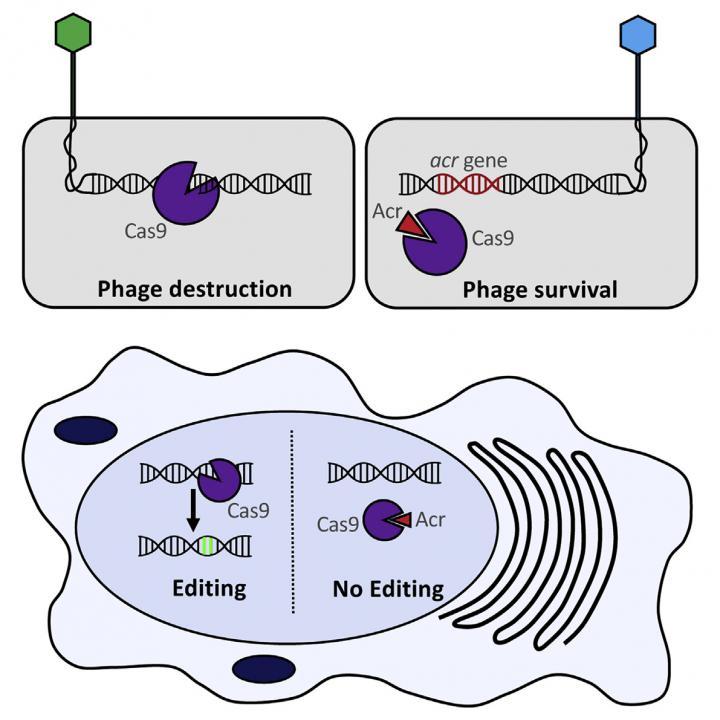



Researchers have discovered a way to program cells to inhibit CRISPR-Cas9 activity. “Anti-CRISPR” proteins had previously been isolated from viruses that infect bacteria, but now University of Toronto and University of Massachusetts Medical School scientists report three families of proteins that turn off CRISPR systems specifically used for gene editing. The work, “Naturally Occurring Off-Switches for CRISPR-Cas9” published in Cell, offers a new strategy to prevent CRISPR-Cas9 technology from making unwanted changes.

Erik J. Sontheimer, Ph.D., professor in the RNA Therapeutics Institute at UMass Medical School, along with Alan Davidson, Ph.D., professor of molecular genetics, and Karen Maxwell, Ph.D., assistant professor of biochemistry, at the University of Toronto, identified three naturally occurring proteins that inhibit the Cas9 enzyme. These proteins, known as anti-CRISPRs, have the ability to block DNA cleavage by the Cas9 nuclease.
“CRISPR/Cas9 is a good thing because it introduces specific chromosome breaks that can be exploited to create genome edits, but because chromosome breakage can be hazardous, it is possible to have too much of a good thing, or to have it go on for too long,” Dr. Sontheimer said. “There is a current shortage of reliable ways to turn off Cas9 once it has already been delivered to a cell. If you can trip an off-switch after the correct editing is done, then the problem is relieved. We report the first known natural inhibitors of Cas9 activity.”
“CRISPR is very powerful, but we have to be able to turn it off,” Dr. Davidson added. “This is a very fundamental addition to the toolbox, which should give researchers more confidence to use gene editing.”
Despite the power of the CRISPR/Cas9 system, it isn’t exact. There are times when the RNA guide used to maneuver the cleaving enzyme into the right position within the genome also targets the enzyme to other sequences that are similar but not identical. These mismatched sites, which can occur as many as 100 times across the 6 billion nucleotides that make up the human genome, can sometimes also be cleaved, causing unintended damage.
In many CRISPR/Cas9 applications—including those under therapeutic development—there is a specific cell type, tissue, or organ that is being targeted for editing, as that is where the disease manifests itself, or where the therapeutic benefit can be realized.
“CRISPR/Cas9 might go to the intended cells in these cases, but it will also likely go to other ancillary cells, tissues, or organs as well. Cas9 activity in these ancillary cells, tissues, or organs is at best useless and at worst a safety risk,” Dr. Sontheimer said. “But if you could build an off-switch that keeps Cas9 inactive everywhere except the intended target tissue, then the tissue specificity will be improved.”
The new paper not only identifies that “off-switch,” he explained, but it shows that Cas9 inhibitors exist naturally and can be identified and exploited.
“There are many different forms of Cas9 that are produced by different bacteria, and the different Cas9s can each have different useful properties in genome editing,” continued Dr. Sontheimer. “So there are already several Cas9s in the toolbox, with many more to come. We’ve now proven that such inhibitors are out there in the natural world and we’ve provided one possible strategy to find them.”
 Relevant
news
Relevant
news